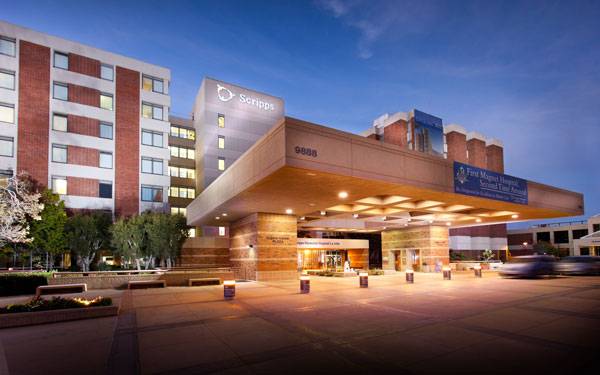Emergency Training: A National First
Scripps Memorial Hospital La Jolla practices for emergency response

No one likes to contemplate what a local disaster would look like. San Diego County residents have a pretty good idea from the 2007 wildfires that ravaged our region, but what about a massive earthquake, or terrorism incident? Would we be prepared?
Local emergency and military personnel took some critical steps by conducting Golden Phoenix 08, a coordinated emergency training event that took place around San Diego County July 21 to 24. It was an important occasion for local, state and federal agencies to talk about and practice how they would work together to protect the public safety and infrastructure in the aftermath of a major disaster.
Disaster preparedness through simulated trainings
On Wednesday, July 23, Scripps caregivers, law enforcement personnel, border patrol staff and military personnel conducted a simulated response to a mock bio-terrorism attack. The goal was to secure and protect the campus of Scripps Memorial Hospital La Jolla to ensure that the hospital remained operational after such an attack.
This was the first time in the nation that a medical facility practiced securing its grounds with the cooperation of law enforcement and the military.
Disaster preparedness drills and strategies
A few of the important exercises from training events included:
- Landing Marine helicopters on the Scripps La Jolla helipad to off-load San Diego Police Department decontamination teams
- Securing the hospital campus perimeter with police and military personnel
- Containing and decontaminating potential bioterrorism victims
- Protecting medical supplies and facilities in the event of civil disobedience
- Testing multi-agency and hospital communications equipment and procedures
Keeping hospitals safe and secure during challenges
Nine years ago, Scripps Health President and CEO Chris Van Gorder went to local law enforcement officials and asked how long it would take them to assist local hospitals with security after a disaster. “You’re on your own for 72 hours” was their response, which wasn’t what he wanted to hear. Officials were not treating hospitals as core infrastructure.
Van Gorder — who has a law enforcement background, and currently serves as reserve commander of the Sheriff’s search and rescue team — set plans in motion to create resources and planning within Scripps to respond more adeptly to crises.
Today, Scripps has a full-time office of disaster preparedness that works to develop disaster response strategies and train staff for its five hospital campuses and many outpatient facilities. Our team already has a strong track record of responding to disasters, including Hurricane Katrina and the 2007 San Diego wildfires.
Building stronger relationships in the community
As many participants commented, this training event and its planning were largely about relationships. This drill helped form long-term relationships between key personnel and organizations that will need to work together closely during a disaster, in order to respond quickly and efficiently.
Disaster preparedness as a pledge to San Diego communities
Scripps realizes that part of our role in the community is to be fully prepared when San Diego, the region or the nation need us most. We’re working to ensure that our facilities, supplies and personnel are both prepared and safe when disaster occurs, whether natural or man-made, so we can be ready to serve.
Overviewing disaster preparedness activities
Here’s a brief timeline of the training event on July 23:
- 8:00 a.m. 2 Marine CH-46 helicopters land in succession at Scripps La Jolla. San Diego Police Dept. decontamination team unloads to help screen vehicular traffic, and secure entries to the hospital.
- 8:10 a.m. Decon team proceeds to hospital entrance to form traffic stop, and screen incoming traffic in an effort to systematically control who comes on campus.
- 8:30 a.m. San Diego Fire Department hazardous materials team sets up decontamination zone, and practices washdowns of “contaminated” victims.
- 8:30 a.m. Scripps personnel set up mock mobile emergency room. Medical personnel practice triaging the “injured” and “worried well.”
- 8:30 a.m. Military and police personnel practice securing and protecting the mock e.r. from a rush of the public seeking care and medications/supplies.
- 9:00 a.m. Drill wraps up. Agencies conduct various “debriefings” to talk about what went right, what needs improvement and how to move forward.
News and media coverage
Before the event, Scripps President and CEO Chris Van Gorder talked to KPBS’s “These Days” program about Scripps’ role in Golden Phoenix 08:
Scr008-439 (MP3, 10 MB)
Van Gorder also spoke to Fox 6 News about Scripps’ role in Golden Phoenix, and our commitment to disaster preparedness in general: